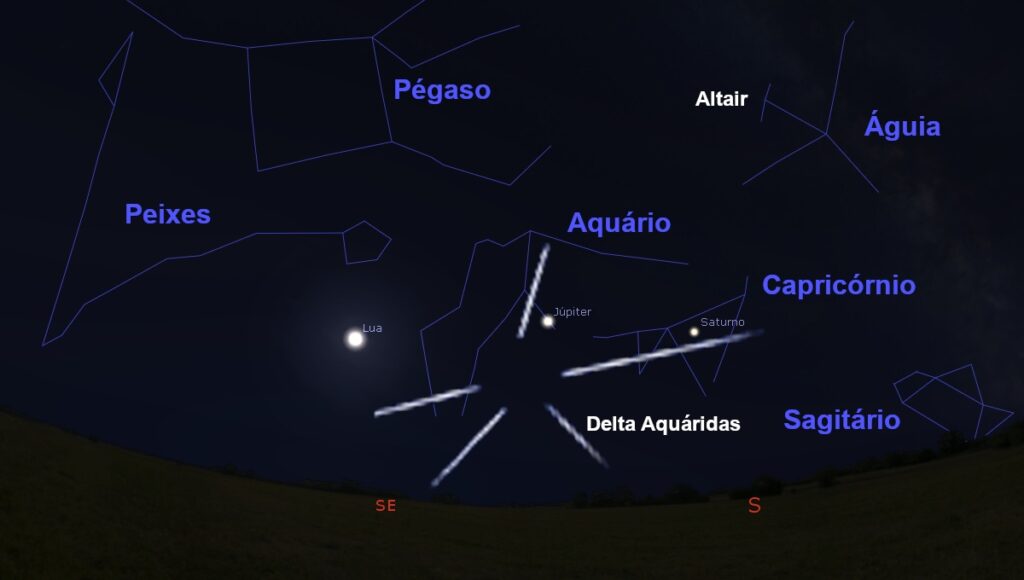In this month of July, the first and last days are marked by the presence of the waning quarter.
At the beginning of the night of the 4th, Mercury will reach its greatest elongation (distance from the position of the Sun) towards the West. But for this reason, we will only be able to see this planet when it is born the following morning.
For early risers this is an excellent time to observe Mercury, for when it is close to reaching its greatest elongations it can also reach higher points in the sky.
At 00:00 on the 6th, our planet will reach its aphelion, the point in the orbit furthest from the Sun. However, as at this time of year the Earth's northern hemisphere is facing the Sun, much more solar radiation reaches our country. than when our planet gets closer to the Sun (perihelion).
At dawn on the 8th, the Moon will be seen slightly above the planet Mercury. Two dawns later it will have already approached the Sun's vicinity, giving way to the New Moon, which does not allow us to observe it.
Two more days later, our natural satellite will have already approached the planets Venus and Mars, and it is possible to observe the conjunction of these three stars. The closest approximation between the two planets will take place on the 13th, being separated by only half a degree (approximately the diameter of the Moon).
Some people will try to imagine consequences of such astronomical conjugations, perhaps even when it comes to public health issues. But the only consequences that may come will result from observing these events without complying with the proper rules of social distancing.
The fourth crescent will take place on the morning of the 17th next to the constellation of the Virgin.
In turn, the Full Moon will arrive at dawn on the 24th, and our planet will appear alongside Saturn. Two days later it will have already reached Jupiter.
Unfortunately, the presence of the moon in a phase when it will be almost full will make it difficult to observe the rain of Delta Aquarius stars, whose name derives from the fact that these meteors seem to arise from the vicinity of the delta star of the constellation Aquarius.
Even at the peak of activity of this shower of stars (around the 28th) you will see much less than the two dozen meteors per hour that would be observable.
Although nowadays we associate these meteors with the dust trail left by comet 96P/Machholz, this was not always the case. Two other comets, Krach and Marsden, became the main suspects.
Good remarks!
Author Fernando JG Pinheiro (CITEUC and DF-FCTUC)





















Comments